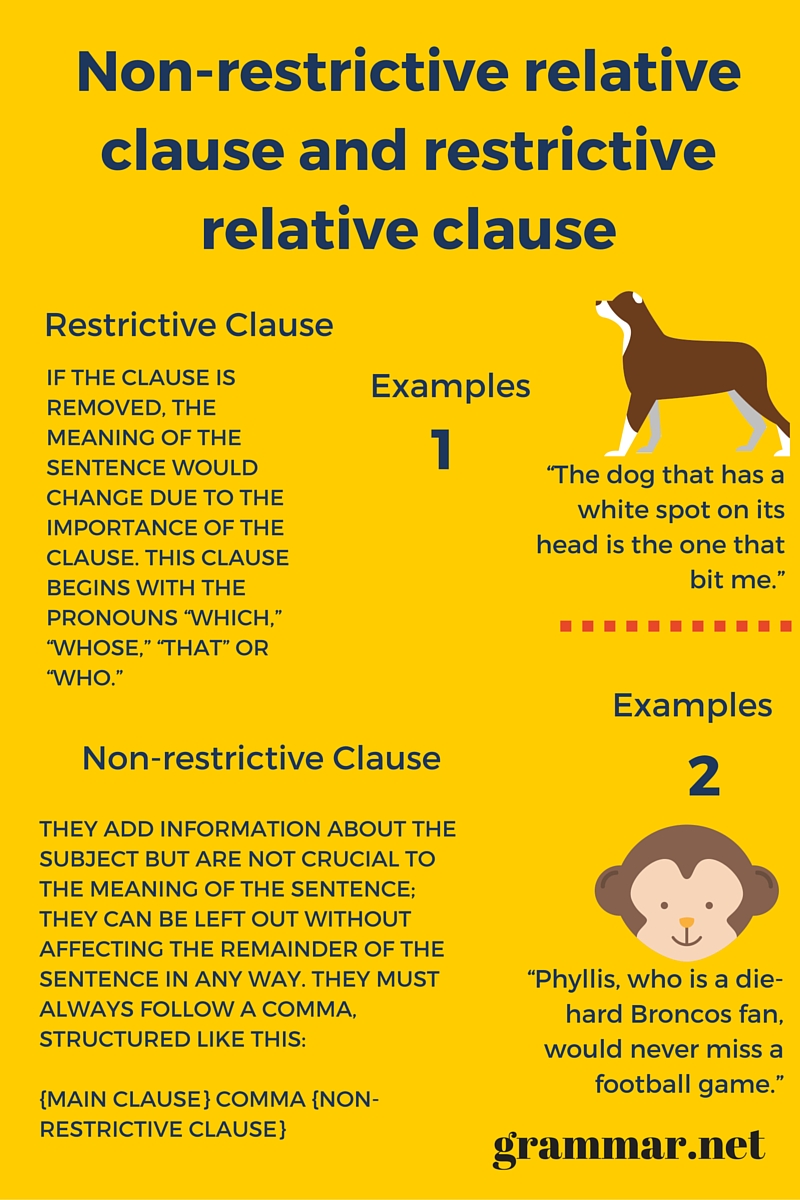A relative clause is a group of related words that defines or adds information about the noun that it follows. These clauses begin with a relative pronoun such as “that,” “which” or “who,” and they are organized into two types, “non-restrictive” and “restrictive clauses.”
Restrictive Clause
Also called a defining relative clause, this small group of words acts as an adjective, adding important information to the noun. If the clause is removed, the sentence structure or grammar would not suffer, but the meaning of the sentence would change due to the importance of the clause. This clause begins with the pronouns “which,” “whose,” “that” or “who.”
 “The dog that has a white spot on its head is the one that bit me.”
“The dog that has a white spot on its head is the one that bit me.”
“The boy who owns the bicycle would like it back.”
“The tree which has the most apples is luckily easiest to get to.”
Non-restrictive Clause
These clauses add information about the subject but are not crucial to the meaning of the sentence; they can be left out without affecting the remainder of the sentence in any way. These are introduced by the pronouns “who,” “whose” and “which” but never “that,” and they must always follow a comma, structured like this:
{main clause} comma {non-restrictive clause}
“Phyllis, who is a die-hard Broncos fan, would never miss a football game.”
“The orange and black cat, which is owned by my friend, loves to catch mice.”
“The 4th grade Math teacher, whose classroom is behind the lunchroom, loves fractions.”







